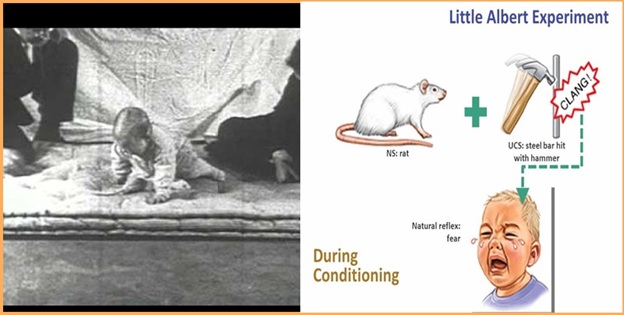Psychologists believe that humans aren't born with fear, they acquire it through various stages in life which means fear is learned. The fears and insecurites that you faced as a child may manifest themselves differently later on in life as a kind of fear that though you may deal with, is still alwys there. One such behavioral psychologist was John .B.Watson who in order to prove this theory in 1920 went on to conduct one of the most unethical experiments in the USA. It went on to become known as the Little Albert Experiment.
1The little Albert experiment
Advertisement
In the little Albert experiment, professor John Watson and graduate student Rosalie Rayner experimented with an 9 month old baby subjecting the infant to fear a white rat. In a series of generalized stimulus, the infant would end up displaying an equal fear to things like Watson’s hair, Santa Claus, a dog, a rabbit and a fur coat.

Image Source: www.feministvoices.com
2Who was John Watson
Advertisement
No he wasn’t the Arthur Conan Doyle character and assistant to Sherlock Holmes. He was a doctorate professor of experimental psychology at John Hopkins University. His experiments were inspired by the famous experimental psychologist Ivan Pavlov and besides conditioning experiments on dogs, he wanted to see if the same experiments on humans to figure out if fear was an instinct or just a reflex that individuals responded differently to in life.

Image Source: www.medium.com
3He used an infant for his experiments
Advertisement
Watson had no scruples whatsoever in using a 9-month-old infant named Albert for his experiment which was to be called “Classic conditioning”. As a baseline series of tests, the child was exposed to items like burning newspapers, a rat, Watson’s hair, a monkey, a mask, a rabbit and a white rat. The child showed no fear to any of these sometimes even reaching for them. The aim of the experiment was to create or condition a fear within the child of these very same items. Pavlov used the same method he had used with dogs.

Image Source: www.instiz.net
4How he induced fear in the baby
Advertisement
The second stage of the experiment involved Watson associating fear with the objects. Each time Albert was exposed to the white rat, Watson banged a hammer against a metal pipe making a loud disturbing sound. This made the child cry each time he heard the noise. After repeating this act several times, Little Albert soon began to cry immediately upon seeing the rat. One can well imagine why this could be considered unethical because if you imagine that little baby pouting and traumatised with such an incident then you will understand why I would consider Watson a deplorable man.

Image Source: www.instiz.net